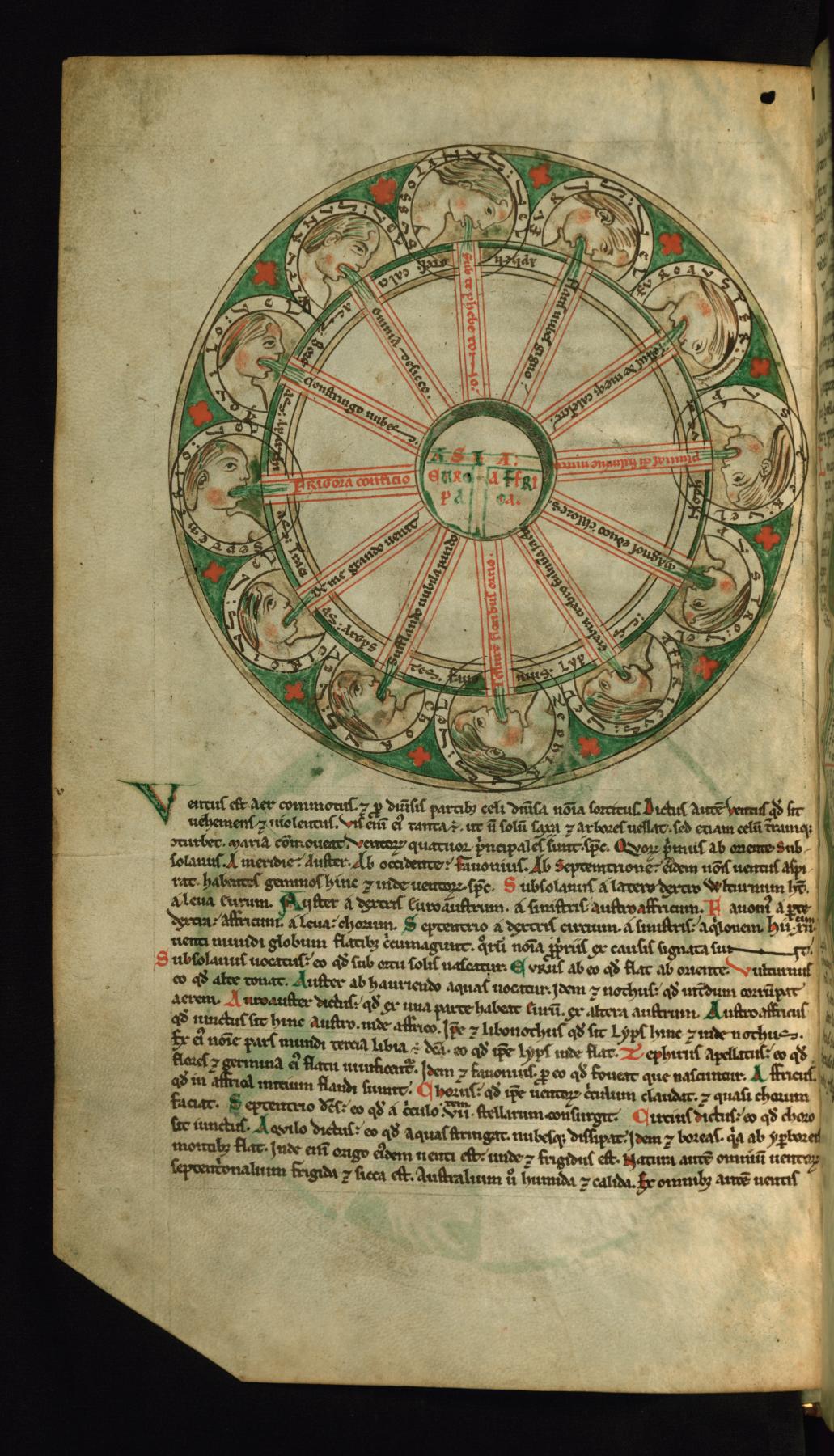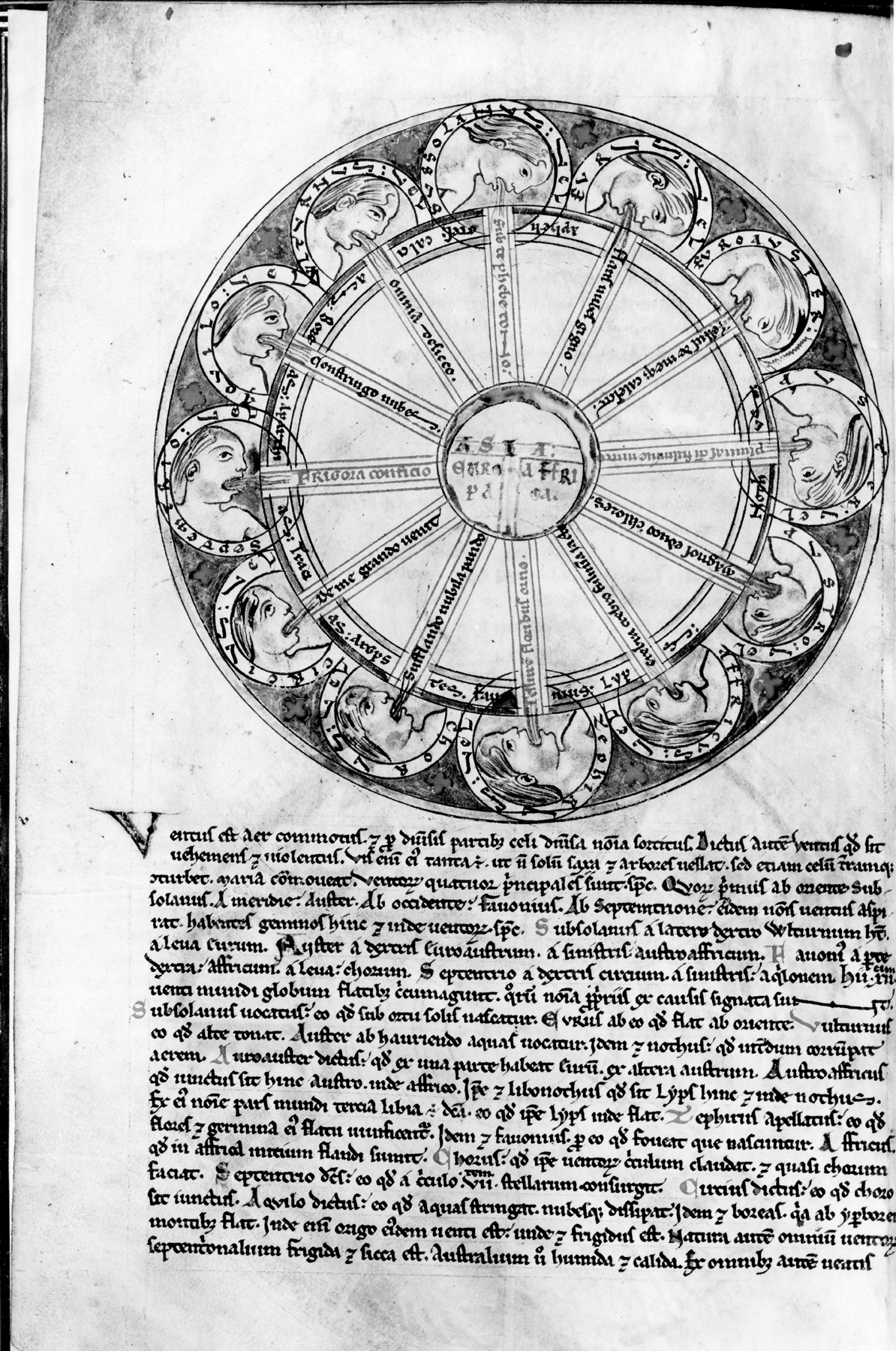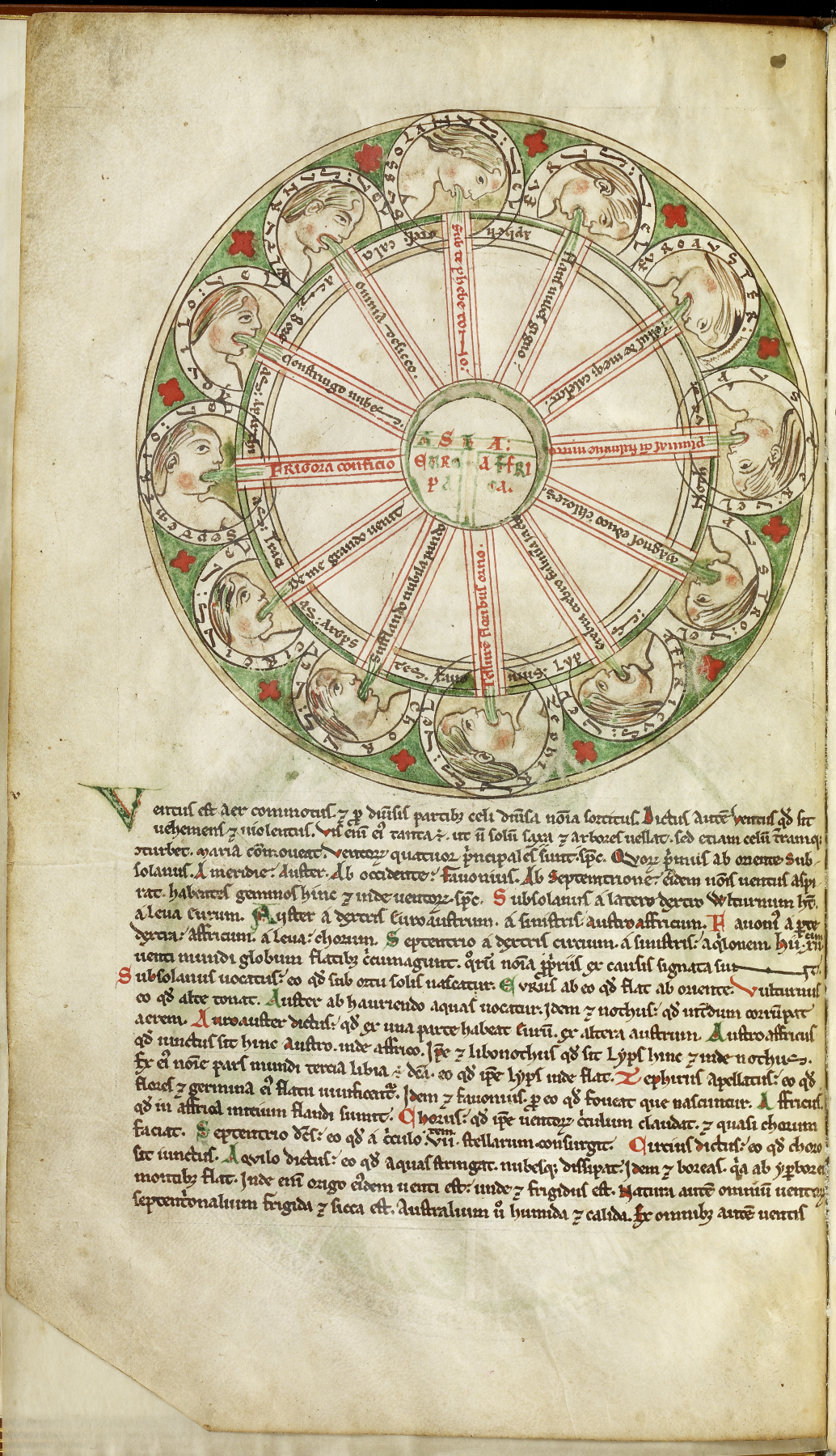Leaf from Cosmography: Diagram of the Winds
(Manuscripts and Rare Books)
The T-O map of the inhabited world occupies the center of this wheel-shaped diagram. Twelve profile busts of the winds, their Latin names provided in encircling bands, are depicted in the diagram's wide outer ring; the narrower, unpainted ring just within it contains the winds' Greek names. The four major winds are associated with the four cardinal directions, with East located at the top of the wheel. The busts of the winds blow toward the Earth at the center of the diagram, and their breath, represented as green strokes, flows into the wheel's "spokes." Each spoke bears a brief characterization of the associated wind, and these are expressed mainly in the first-person, as if spoken by the wind itself. Thus, the spokes of this diagram function like speech bubbles in a modern cartoon.
Created in England in the late twelfth century, this manuscript was intended to be a scientific textbook for monks. The manuscript is brief at nine folios, and was designed as a compendium of cosmographical knowledge drawn from early Christian writers such as Bede and Isidore, as well as the later Abbo of Fleury. Those writers, in turn, drew on classical sources such as Pliny the Elder for their knowledge but adapted it to be understood through the filter of Christianity. The twenty complex diagrams that accompany the texts in this pamphlet help illustrate them, and include visualizations of the heavens and earth, seasons, winds, tides, and the zodiac, as well as demonstrations of how these things relate to man. England is especially notable for the production of illustrated scientific textbooks. Although the grouping of texts and diagrams here is unique, the manuscript is related to other scientific compilations from this era surviving today in the British Library and at St. John's College in Oxford.
Provenance
Provenance (from the French provenir, 'to come from/forth') is the chronology of the ownership, custody, or location of a historical object. Learn more about provenance at the Walters.
Gruel and Englemann Collection, Paris [1]; acquired by Henry Walters, Baltimore, 1903; by bequest to Walters Art Museum, 1931.
[1] no. 131, bookplate on inside upper board
Geographies
United Kingdom, England (Place of Origin)
Measurements
H: 10 1/2 × W: 6 1/8 in. (26.7 × 15.5 cm)
Credit Line
Acquired by Henry Walters, 1903
Location in Museum
Not on view
Accession Number
In libraries, galleries, museums, and archives, an accession number is a unique identifier assigned to each object in the collection.
In libraries, galleries, museums, and archives, an accession number is a unique identifier assigned to each object in the collection.
W.73.1V







